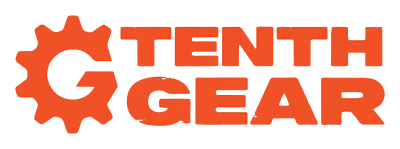Strategic Planning
Background
The company provides B2B business services to customers in various industries. Its internal tech team has been critical to the company’s success, creating innovative solutions to deliver products and services according to customer specifications.
Problem
The company wanted to accelerate revenue growth and had proactively identified a few improvement areas.
Deliverables quality
While the internal team diligently created functional and robust solutions, the leadership felt that the quality of the initial deliveries and meeting the time estimates needed to be improved to support growth goals.
Solutions often contained bugs discovered after production rollout, causing delays, rework, and customer dissatisfaction.
Time estimates were not always met, making planning and providing delivery timelines for customer jobs difficult.
Creating new revenue streams with a subscription model
The company had established a per-project pricing model for custom work delivered by the tech team. However, they were excited to explore new sources of predictable monthly revenue. Creating generalized product lines was an attractive proposition as it was easily scalable and could be marketed to existing clients.
The company wanted to maintain the headcount, so reaching this goal required optimizing the existing workload to find the capacity.
Infrustructure
The company faced a sizeable upcoming software license renewal bill in a few years. They wanted to investigate the possibility of finding savings over the next few years while empowering the team to experiment quickly within the set budget.
Digital Assets Audit
The company wanted a detailed audit of its digital assets to understand the urgency and requirements for replacement. The audit results would then be proactively included in the strategic business plan and budgeting to drive digital transformation.
Challenges
The company faced the challenge of a packed workload, which limited the time available for dedicated improvements due to client commitments.
Solution
After reviewing the top-level problems, the plan was developed to tackle the issues in the order of dependency.
Team process improvement
- The existing internal team processes were audited, and gaps were addressed to improve quality, efficiency, and security.
- The quality assurance process was implemented.
- The updated status reporting format increased trust between the tech team and the non-technical board and made communication with customers easier.
Team upskilling
- Comprehensive training based on individual strengths and gaps was developed and performed to upskill the team in the new technologies, concepts, and frameworks.
- The upskilling provided the team with a variety of new tools, resulting in faster implementation, as the best tool was selected for each task.
Low code solution augmentation
After analyzing the custom solutions developed by the team, a section of common processes was migrated to low-code solutions. The migration dramatically increased productivity and task processing speed while improving reuse and maintainability. Non-technical users could review the processes and make small changes without requiring technical team support, freeing up even more time. The migration to low-code tools was incremental, starting with new jobs.
Tech Tooling And Infrastructure Migration
Upskilling the team with new frameworks and technologies allowed them to develop in the cloud using low-cost technologies.
Switching from an in-house data center to cloud-hosted open-source software allowed faster experimentation and significantly reduced future licensing costs.
Digital Health Check
The audit was performed, and the resulting deficiencies were presented to the board, along with recommendations for addressing them and an estimated timeline. The audit results ensured that the company is well-positioned for future growth, has reduced risk exposure, and can maintain its product lines.
Product Lines Revenue
Due to increased team performance, new products were developed quickly and marketed to existing clients, generating additional revenue.
Outcome
As the company had a limited capacity to invest much time into improvements, they were rolled out slowly and applied first to new products.
Migrating systematically allowed the company to support existing clients while developing new solutions on the new framework.
- Internal team ready to support planned growth
- Infrastructure supporting the company goals
- Reduced operational costs
- Additional sources of revenue
